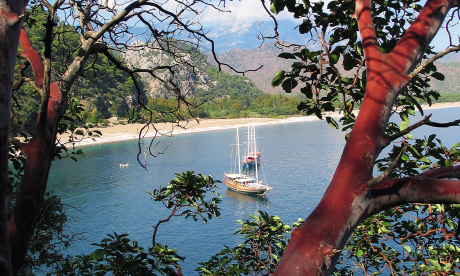
It's not over until the days get dark. Don't miss these late-trips to take to catch some summer sun and adventure; and they're only a few hours' flight away
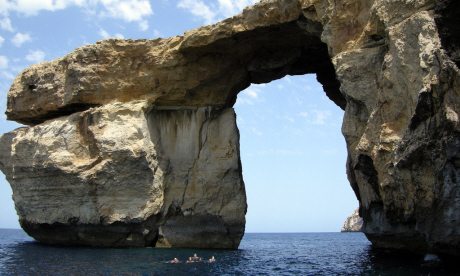 1. For a late swim, go to Gozo
1. For a late swim, go to GozoThe late afternoon sun was hot as I scrambled down to the swimming ledge. The smell of sweet eucalyptus filled the air and the deep fjord-like inlet shimmered with the great blue of the Mediterranean. This was Wied il-Ghasri, on the wild and beautiful north-west coast of Gozo – my favourite place in the world to escape and swim.
I peered gingerly off the ledge, stripped off and, with a deep breath and great cry, leapt in. Bobbing about in the warm water, the cliffs rose above me and the abyss dropped below.
There are many such submerged canyons and coastal formations on the small island of Gozo. It’s just a short boat ride from Malta but the terrain is wilder and the pace of life more laid-back. Even in October the water is still warm because the sea acts like a huge storage heater, holding on to the rays of summer. It’s quite possible to swim around for 30 minutes or so without getting cold.
The island is made from limestone – ancient shells from an old seabed – and its geology is fabulous. Over at Dwejra Point you can find the Inland Sea: a lagoon from which you swim through a deep, dark cave to the sunlight on the other side – where you’ll find the real sea, pounding beneath 30m-high cliffs. It’s one of the most exciting swims in Europe.
Next to this is Fungus Rock and a cathedral-like sea arch that you can swim beneath, the sea so deep and clear it gives you vertigo. There are big rock bathtubs too, fed by channels underground, which the brave can dive down and snorkel in.
Gozo has a few small villages and a ruined citadel but the rest is lazy olive groves and sleeping cats. At Mgarr ix-Xini there are more inlets with high rock ledges from which the local boys swallow dive. The beach shack is a perfect place to watch them (and it serves up fine grilled sardines and crab).
If you run out of pursuits on Gozo it’s easy to rent a small speedboat to explore the crystal waters of the Blue Lagoon and swim among the sea stacks on the adjacent island of Comino.
This mini archipelago is a paradise that feels more like Polynesia than Europe – a place I return to year after year.
Getting started: Several airlines fly UK-Malta direct; flight time is around three hours. From Cirkewwa (north Malta), ferries run to Mgarr (Gozo); journey time is 30 minutes. Return fares for foot passengers cost €4.65 (www.gozochannel.com).
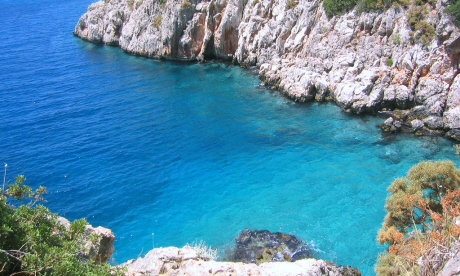 Five more Mediterranean wild swims
Five more Mediterranean wild swims1. Kleftiko, Greece
This beach on the island of Milos in the Cyclades offers lagoons and basalt columns in shallow turquoise seas.
2. La Grotta del Cammello, Italy
Plunge into water caves on the east coast of Marettimo, a remote island off north-west Sicily.
3. The Calanques, France
Swim beneath limestone cliffs and remote coves close to Marseille.
4. Aperlae, Turkey
Head to the Lycian coast to float over the Roman ruins of this ancient city, brought down by earthquakes and now submerged by the sea.
5. Blue and Emerald Grottoes, Italy
Paddle into these popular caves on the glorious Amalfi coast to see the light shine 100 shades of green and blue.
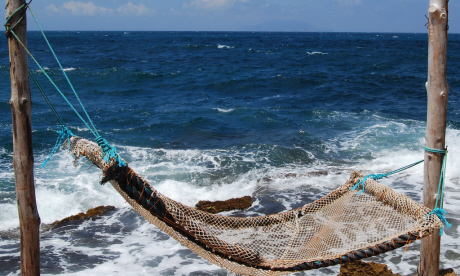 2. For beaches, go to Guinea-Bissau
2. For beaches, go to Guinea-BissauInside Bubaque’s tiny museum, a hollow log sat waiting to be struck. Sana, a young Bissau-Guinean man, picked up the wooden sticks and tapped fondly at the instrument, producing a hollow sound that resounded through the tin-roofed building.
“When I hear this,” said Sana proudly, “I understand if there’s a meeting, a ceremony or if we should go to the sacred forest. It’s our way of sending text messages.”
The bombolong, as this drum is known, is the original bush telegraph. In the past, similar versions existed all across West Africa. But in most places, as pylons have popped up, there’s not much need for the bombolong anymore; no one recognises the beat anyway.
However, on the remote Bijagós Archipelago, off the coast of Guinea-Bissau – the small state wedged between Senegal and Guinea – the need is still there. While in Senegal ‘bombolong’ is now the name of a buzzing nightclub, on the Bijagós Islands it remains the lifeline of the people.
Little had changed on mainland Guinea-Bissau since I first visited in 2003. Bissau, the capital of a country that won independence from Portugal in 1974, was still the same collection of crumbled colonial buildings, the red-tiled roofs long-since caved in. Most of this nation’s 1.6 million people still lived without electricity or clean water.
But out on the Bijagós – a string of 88 small, fertile islands, protected within a Unesco Biosphere Reserve – things were changing. Since my last visit, the archipelago had become a place that foreigners could actually get to, and around, with relative ease. Trips to islands where the rare freshwater hippo and marine turtle lurk can now be arranged (with patience...) through the reserve headquarters on Bubaque.
On a Friday morning in Bissau, drinking strong coffee on a terrace brimming with locals and foreign journalists discussing the day’s news, I heard the horn of the rather misnamed Bijagós Express ferry announcing its impending departure. At the port I pushed through the crowds, thrust a 5,000 franc (£6) note through the bars and procured a hand-scribbled ticket. Stepping over crates of oil, sacks of rice and baskets of chickens, I boarded the ferry to Bijagós.
At Bubaque, the Bijagós Islands’ transport ‘hub’, locals waited excitedly for the boat’s arrival. Some boys, fishing under the shade of a regal kapok tree, waved. A speedboat, from the hotel on neighbouring Rubane, pulled up to fetch me.
Only a quarter of the Bijagós Islands are inhabited; the Bijagós people believe that spirits inhabit many of the islands and to live there would be to upset the delicate cosmos that holds the communities together.
When I first visited Rubane in 2003, the island was uninhabited; nowadays there is a small, French-run hotel. The abiding memory of my first trip was of hitching a lift there with a local priest from Bubaque. The boat had landed on a white beach and we’d waded ashore through warm shallow waters. My friend and I spent the afternoon lying in the hot sand watching the stingrays dart like shadows across the sea floor.
With Rubane now inhabited and visited by tourists, I was curious to know how this had affected the Bijagós people. “The hotel gives us work,” explained Sana, whose job means he can stay on the islands and study languages at the local college. While Bijagós people speak their own indigenous language, like the multitude of other ethnic groups in Guinea-Bissau they also speak Creole, a mixture of African languages and Portuguese. The latter is the official language, but French is becoming more prevalent: Guinea-Bissau is a tiny country in a region of French-speakers.
“Life has changed. Foreign fishermen are trawling our waters illegally,” said the guide at the Bijagós Biosphere Reserve headquarters. “Our fishermen have nothing left to catch; the men are leaving for the mainland. But our life has changed because of tourism too; we have work and have started to learn French. But people are selling their land; this will change our culture too, one day.”
At Rubane, I stayed at the new hotel, a set of luxurious small wooden bungalows strung along the same sparkling white beach where I’d lain all those years ago. A couple of speedboats were anchored in the sea, which was still as turquoise, warm and peaceful as I remembered.
From my balcony one morning, I heard the slap of oars on water, and then a flurry of activity as hotel staff ran down onto the beach. A dugout canoe was paddling past on the glassy horizon, filled with silvery fish. After excited shouts from shore to boat, the canoe slid up onto the land and the hotel manager chose her catch for the day.
That night we ate carpaccio of carranque, thin slivers of the local delicacy marinated in lime juice, overlooking this once uninhabited stretch of paradise. I remembered, with a smile, how I’d eaten a stew made from monkey and palm oil on that trip long ago, when I was still a vegetarian. As far as tourism goes, things on the Bijagós have changed for the better.
When it was time to go, I asked Sana when the Bijagós Express would leave for Bissau. Maybe 2pm, he said, maybe midday. Keen not to be stranded, I asked, jokingly, if he could tap out a beat on the bombolong to ask someone on Bubaque the ferry timetable. We all laughed, and he switched on the small transistor radio sitting on the bar. Soon enough the resonant tapping of the bombolong could be heard: Radio Djan Djan, Bijagós’s community radio, announcing the ferry times accompanied by its distinctive drum jingle.
“If I am in Bissau, or in Senegal,” said Sana, “and I can’t hear the bombolong calling, I listen to Radio Djan Djan, just so I know what’s going on.”
Some things, it seems, remain sacred.
Getting started: TAP flies to Bissau from Heathrow or Gatwick, via Lisbon. Prices start from £695; flight time is around 6.5 hours plus stopover. The public ferry leaves Bissau on Friday, usually at midday; check the board at the port the day before. It returns on Sundays. Ponta Anchaca Hotel can arrange speedboat transfers from Bissau and Cap Skirring in Senegal.
On Bubaque, Casa Dora is popular and does good, basic food. On Rubane, the luxurious Ponte Anchaca Lodge (doubles from €92) offers beautiful wooden houses on the beach and excellent food on the jetty.
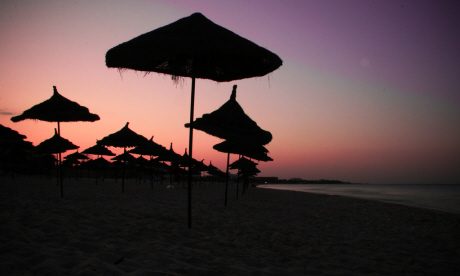 Five more west African beaches for autumn
Five more west African beaches for autumn1. Senegal
The Petite Côte stretches south for 150km, from near Dakar. Sunbathe between traditional wooden pirogues in one of the many quaint fishing villages.
2. Cape Verde
There are beaches aplenty on this ten-island archipelago; windsurfers should head to the blasted shores of Sal and Boa Vista.
3. The Gambia
Take your binoculars to coastal Karinti Reserve, just north of Tanji – fine beach, fine birding.
4. Tunisia
Djerba Island has some of Tunisia’s least-spoiled sands, while El Hawaria and Manzil Tmim are crystal clear and crowd-free.
5. Morocco
For seaside strolls with an arty air, smart riad-stays and souk-shopping, try Essaouira, 150km south-east of Marrakech.
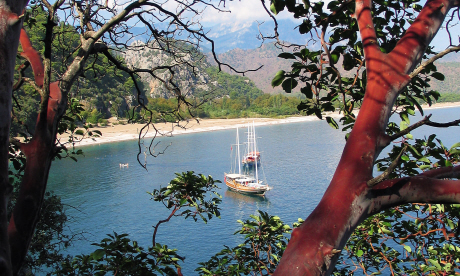 3. For superlative sailing, go to Turkey
3. For superlative sailing, go to TurkeyIn a bay perfumed by the scents of spice rack and bathroom cabinet – powerful blasts of sage, oregano and pine – we tied up by the sunken ruins of an Ottoman bathhouse. It was now that the guests on our schooner-style gulet, as quintessentially Turkish as the dhow is Arabian, stirred from their deck loungers.
Some donned masks and flippers and threw themselves into the warm, clear October waters. Others popped ashore to potter among the nearby ruins of some nameless Byzantine settlement. Somebody launched the gulet’s kayak for a paddle around the bay. The rest appeared content to crack a beer and watch another sumptuous lunch – aubergine and yoghurt dips, börek pastries, salads, water melon – materialise beneath the awning on the rear deck.
Anchor-anywhere gulets once shipped mandarins to ports such as Izmir; in recent decades, however, they’ve been adapted as enchanting small-group cruisers. With their high galleon sterns, twin masts and long bowsprits, these timber motor-sailers are strikingly romantic. Panelled cabins and en suite bathrooms, sundecks and full-service crews see to it that they’re also luxurious. You can pitch in if you fancy trying your hand at sailing, but you’re not expected to lift a finger.
You’ll find gulets among the deeply indented, myth-haunted and ruin-rich coasts of ancient Caria and Lycia, a coastal region book-ended by the modern ports of Bodrum and Antalya. Among this concertina maze of bays, peninsulas, gulfs and islands there are endless anchorages that your small group of perhaps 14 or 16 will have all to yourselves; these sheltered shores, stiflingly hot in high summer, are a delight in the comparative cool of autumn.
Favoured areas rich in shore-side history and fine beaches include island-strewn Fethiye Bay, with the lovely Byzantine monastic ruins at Gemiler; Dalyan, where day boats can be arranged from magnificent Iztuzu Beach to float upriver to bird-rich Köyceğiz Lake; and the Gulf of Gököva, a popular week-long itinerary for gulets originating from Bodrum.
Getting started: Gulets can be booked as private charters or individually through Turkey specialists such as Exclusive Escapes, gulet specialists Peter Sommer Travels or Sailing Cruises in Comfort, or through general operators including Explore. Or try your luck by sounding out the captains on the gulets moored along the quay at ports such as Bodrum, Marmaris, Göcek and Fethiye.
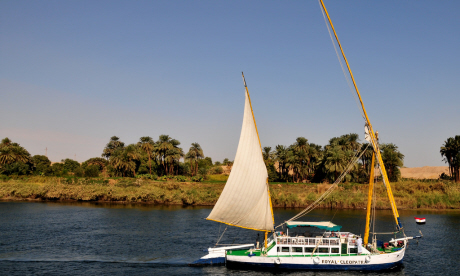 Five more traditional boat trips
Five more traditional boat trips1. Felucca, Egypt
Sail the Nile on one of these simple lateen-sailed boats, mooring at riverbank ruins and sleeping on deck.
2. Dhow, Oman
Cruise the marine-life-rich waters of the Musandam Peninsula (a 2-3 hour drive from Dubai). Plan a trip of at least two nights, to camp on remote beaches and reach isolated coves.
3. Gabarre, France
Admire the châteaux and vineyards on a glide down the Dordogne River aboard a gabarre, once used to ferry wine to Bordeaux.
4. Dghajsa, Malta
Take a tour of Valetta’s harbour in one of these wooden rowing boats.
5. Rabelo, Portugal
Sail up the Douro River from Porto on a barco rabelo, once the only boats able to carry wine barrels along this waterway. Stop off for tastings en route.
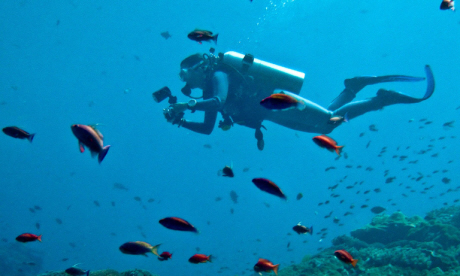 4. For diving, go to Oman
4. For diving, go to OmanThe sheer cliffs of Bandar Jissah are as yellow as the desert sands. Surrounded by these towers of golden rock, about 15 minutes from the capital Muscat, there is a small sheltered cove where Nabucco Extra Divers makes its base. There are other, more sophisticated resorts along this coast but I like Nabucco because everyone who stays there is interested in the simple pleasure of diving in these rich coastal waters. This is a diving resort very much built and run with divers’ needs in mind.
Some divers complain that the waters off Oman are not as clear as those in the Red Sea – which is true. But they are also far less busy, and the inshore reefs hold a splendid variety of life.
For me it was the cuttlefish that made the dive sites near Bandar Jissah special. One day I lay close to the sand no more than 8m underwater while a male cuttlefish put on his best display for a prospective mate. Slowly, carefully, I crept closer and closer until I was no more than a metre from the neon flashes of colour that lit up the male’s mantle.
Turtles were my companions on about half of my dives, and although I didn’t see any big stuff (sharks) the reefs were healthy enough to provide plenty of interest. It was also a pleasure to take a picnic-rest stop on secluded sandy beaches along the dramatic coast where every bay felt like a secret harbour.
At Bandar Khairan there is a decent-sized wreck – the 3,000-tonne Al Munnassir – which requires deeper diving to a maximum of 30m. Hordes of yellow-lined fusiliers, a solitary juvenile emperor angelfish and hundreds of sergeant majors clustered around the wheelhouse. And then, clinging to a strut below a piece of deck rail, I spotted a seahorse. It lay prone rather than upright and I felt guilty for disturbing its peace with my bubbling scuba gear. There are around 40 dive sites within easy reach of Bandar Jissah, and the accommodation is in small thatched chalets on the beach, with a restaurant and dive centre a short stroll away.
I remember walking along the shore each evening after dinner by the pool and watching the glowing phosphorescent trail of my footsteps in the shallows.
As well as inshore reefs there are dive sites a short distance along the coast around Fahal Island, and it’s occasionally possible to organise an excursion to the Damaniyat Islands marine reserve, about 20km offshore.
Getting started: Regal Dive offers seven nights at Nabucco Extra Divers, including flights with Oman Air from Heathrow, transfers and half board in a beach bungalow, from £939 (based on two sharing). Flight time is 7.5 hours.
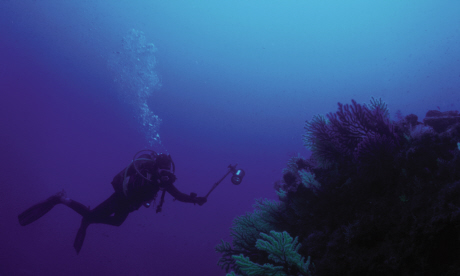 Five more late-summer dive spots
Five more late-summer dive spots1. Taba, Egypt
At the northern edge of the Sinai Peninsula, this is a great place for beginners, with healthy reefs that are easily accessible.
2. Sudan
Join a liveaboard and explore some of the most iconic sites including Sha’ab Rumi Reef or the wreck of the Umbria.
3. Gozo, Malta
Squeeze in a last-minute dive in warmer waters, with lots of spectacular open caves.
4. North Sardinia, Italy
There’s plenty of good Mediterranean diving in La Maddalena National Park; some local dive centres stay open until mid-October.
5. Dahab, Egypt
Sea temperatures are still about 26-27°C in October, plus Dahab offers a quieter atmosphere than the mega-resorts of Sharm el-Sheikh or Hurghada.
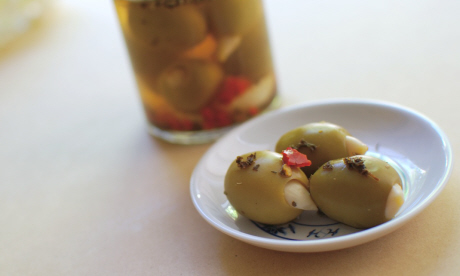 5. For fine food, go to Cyprus
5. For fine food, go to CyprusAutumn is glorious in Cyprus. Summer’s scorching heat starts to slide, and I can get back out into the countryside, which is blue-green with olive trees, and be part of harvest time.
The olives in my grove, like my neighbours’, have turned purple; the almonds and carobs are ready to pick; the grapes in the vineyard are plump and ready to turn into wine.
As a traveller, joining in with the harvest – and the après harvest parties – is a great way to mix in. Whether you’re a wine lover or a foodie you will come away with memories that will last, not to mention several kilos of the freshest produce. Just head for the nearest kafenio (coffee shop) – every village has at least one, it’s where all the men go to gossip – and offer your fruit-picking services.
Once harvested, olives will be prepared for eating (you’ll see them laid out in the sun) or taken to the nearest press to be squeezed for oil. Cyprus is dotted with presses; simply wander in. Pressing olives is a riotous occasion.
You can help gather in the grapes and sample a few brews, too. The Chrysorrogiatissa Monastery is a surprisingly trendy place to get to grips with grape pressing, as is the Zenon Winery in Omodos village.
Making soutzoukos is an autumnal activity. Join the vivacious Yiota in the food workshop of Agios Neofytos Monastery to make this chewy sweet by threading almonds on to string and dipping them into unfermented grape juice.
Get to grips with Cyprus food with a blowout mezedhes lunch. Give lountza (smoked pork) a try, or the slow-cooked kleftiko (lamb). Try Yiannis Taverna in Kathikas near Paphos and ‘new wave’ Archontiko Papadopoulou in Larnaca – both will let you help prep the dishes.
Or you could just head for the beach with a picnic. Make for Limassol Market where you can browse for halloumi cheese, loukanika sausages and herbs tied up in unruly bundles. Take wine and drink a toast to time spent in the Cyprus sunshine.
Getting started: Cyprus Airways flies Heathrow to Larnaca daily. Flight time is 4.5 hours; returns from around £280. Also try easyJet, Monarch and Jet2, which fly from UK airports to Paphos and Larnaca. The Columbia Beach Resort in Pissouri is stylish and central. Doubles from €126 (£110).
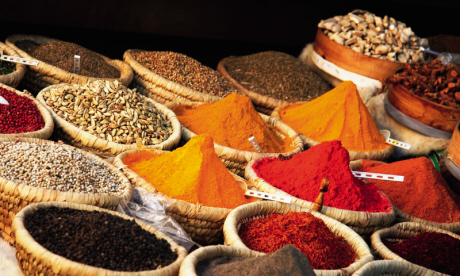 Five more foodie hotspots
Five more foodie hotspots1. Chestnuts in Croatia
The October Marunada Festival celebrates the nuts that thrive near Lovran, due to its mild microclimate. Enjoy the food and the folk dancing (www.lovran.com).
2. Cooking in Morocco
Scour the markets of Marrakech, then learn to cook the spoils. On The Menu runs courses.
3. Wine in Madeira
The Portuguese isle still simmers at 20°C in October – perfect for a warming walk (with tastings) around the traditional Madeira wine lodges of capital Funchal.
4. Truffles in Italy
Hunt for fungi in the forests of East Tuscany. Arrange forays from Il Casalone.
5. Cheese in North Cyprus
Learn to make halloumi and bake bread at Delcraft, an eco-village at the base of the Karpaz Peninsula (www.ecotourismcyprus.com).
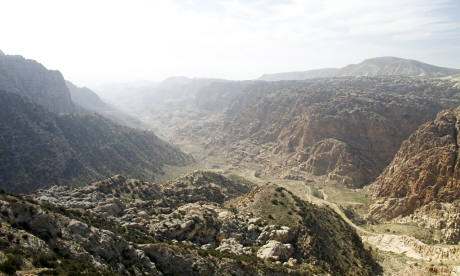 6. For a wild walk, go to Jordan
6. For a wild walk, go to JordanJordan’s gorgeous Dana Nature Reserve is an ecotourism beacon for the future, says Henry Wismayer
“Forty-five million years ago, all of this was under the ocean,” said Ahmed, a grey-goateed ranger, indicating the incredible view that presented itself from Dana Guesthouse’s balcony. “What you see is what stayed behind when the sea left.”
We were gazing at Wadi Dana, the central artery of the Dana Biosphere Reserve, 320 sq km of sharply incised gorges spilling down from the mile-high escarpments of the Great Rift Valley. The southern desert-scapes of Wadi Rum and Wadi Arabah might pull in more visitors, but this is Jordan’s largest and most diverse protected region: an Aladdin’s canyon of plant species that are found nowhere else and cliffs stalked by rare Nubian ibex and Syrian wolves, scattered across four distinct climatic zones that have been sculpted on the floor of the ancient Tethys Sea.
Here, as elsewhere in the Middle East, if you want to explore all this ancient landscaping, you should wait until autumn. Summer daytime temperatures often exceed 40°C, sapping the motivation of any would-be walker. By October, though, that heat has receded – an excellent thing, for if you want to get anywhere in Dana you have to hike to get there.
From the domed plateau surrounding Dana village, the 14km Wadi Dana Trail wound 1,200m down past lonely cypress trees and surreal bubble-rock formations, until the orange-stained scarps blended into the North Arabian Desert. It took four hours to spot my destination; a minute more before I was sat on some scatter-cushions sipping iced lemonade with chopped mint. The transition from flyblown trail to reception-area sofa came courtesy of the Feynan Ecolodge, curiously at home in its desert amphitheatre, like a salubrious ziggurat blown together in a sandstorm.
Since opening in 2005, the lodge has become an emblem of the crusade to introduce sustainable tourism to Dana. Its eco-credentials are obvious even before you walk through the ornate wooden door, from the sun-deflecting slabs set in exterior walls to the rooftop solar panels, designed to power bathroom lights and hot water. Illumination elsewhere relies on more primitive technology – come dusk, the 26 bedrooms and communal courtyards are lit by candlelight, as the place takes on the atmosphere of a medieval caravanserai.
The lodge’s central location serves as the perfect launch-pad for further exploration, on a wide network of trails ranging from short hikes along the valley floor to the five-day journey south across the Sharah Mountains that ends at the ruins of Petra.
Predictably, in endlessly ancient Jordan, the past is ever-present here in Dana, too. From the moment you step into the Ottoman-era labyrinth of Dana village – the reserve’s normal entry point, just off the King’s Highway – history vies with scenery for the visitor’s attention.
The village is currently the scene of a ground-breaking restoration project. Meandering through this alfresco museum, I was surprised to find no barriers restricting access to the 98 archeological sites that dot the reserve. Instead, I was able to stumble unimpeded over the rubble that once comprised the earthquake-ravaged citadel of Khirbet Feynan, a far-flung outpost of the Byzantine Empire. I was free to peer straight down into the sinister crab-holes of the pioneering copper mines – their edges scattered with shards of bright-green malachite – that helped to build it.
Up on an embankment overlooking the hallucinatory shiver of the desert plains, I spent hours picking through the animal bones and limestone crockery of a Stone Age settlement believed to date back 11,000 years, some of the earliest evidence of sedentary living.
When you encounter – and quite possibly share tea with – the region’s modern-day descendents in the rag-tag Bedouin encampments that line the valley, they’ll tell you these relics have brought their own benefits. Far from upsetting the status quo, tourism in Dana is propping up the agrarian economy. It provides both job opportunities and a market for local craftsmanship, and is stemming the flight of young people to the cities.
Not a bad deal for the foreigner either, you might think, as you sit under the stars on the Feynan terrace enjoying a vegetarian banquet of raisin coleslaw and stuffed eggplants, all of it produced by farmers in a nearby village. The Bedouin, after all, know a thing or two about hospitality.
One of them, eco-guide Mohammad, took me out one morning. Our destination was Wadi Ghweir, a beautiful slot-canyon showcasing the kind of water-smoothed, pastel-rocked geology that is so synonymous with Jordan. It can be forged in safety right up to November, when the wet season kicks off in earnest.
The scenery got better the deeper we ventured. Walls that began spread and splintered soon narrowed into a gullet of granular rock, which rose in raspberry-ripple dips and bulges blocking out the sun. An hour in, rivulets of water appeared at our feet, running in braided channels before disappearing back underground – a sign that, up on the Shobak Plateau, the rains were beginning.
“Where you find the water you can make the life,” said Mohammad, hopping from boulder to sandbank before pushing on up the gorge. Five hundred generations have done just that in Dana. And as Jordan sets the standard for ecotourism in the Middle East, it seems likely that it’ll continue for generations to come.
Getting started: A one-month visa costs 20 Jordanian dinars (£17), obtainable at all ports of entry, except the King Hussein Bridge. Direct London-Amman flights are available with BMI, Royal Jordanian and easyJet; returns cost from £106. Doubles at Feynan Ecolodge start at 74JOD (£64). In Dana village, try the character-filled Tower Hotel; singles from 10JOD (£9).
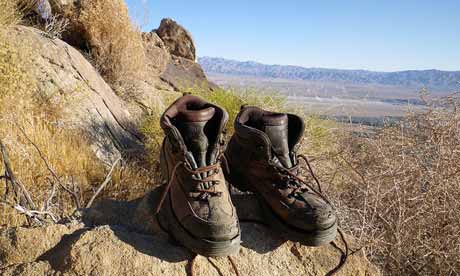 Five more middle east walks
Five more middle east walks1. Al Ayoun Trail, Jordan
This 12km community focused hike amid the lush Ajloun Forest Reserve is part of the region’s wider Abraham Path (www.abrahampath.org).
2. Jebel Shams, Oman
A day-long hike in the Western Hajars takes you up Oman’s highest peak, Jebel Shams (2,997m).
3. Mt Sinai, Egypt
Start from St Catherine’s Monastery at 3am to summit Sinai for sunrise.
4. Lebanon Trail
The 440km Lebanon Trail is the country’s first long-distance hike. Do the lot, or pick one of 26 sections (www.lebanontrail.org).
5. White Desert, Egypt
Walk amid weird rocks. KE Adventure’s Egypt’s White Desert Trek spends four days hiking this little-trodden landscape.
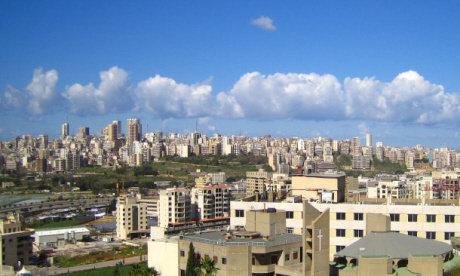 7. For a sultry city stroll, go to Beirut
7. For a sultry city stroll, go to BeirutRonnie Chatah is a man on a mission: to show visitors his city on foot. Most Lebanese prefer to keep their evening promenading to Beirut’s shoreline Corniche but Ronnie is more interested in the backstreets.
“There are whole chunks of this city that even local tourists forget,” he told me as we weaved our way down through the old Armenian quarter of Kantari and the start of the civil war’s Green Line.
Looming over the skyline was the pockmarked shell of the Holiday Inn, looking like an overgrown weed. Behind it flashes of Mediterranean blue formed the backdrop to these curving hill roads where derelict villas teetered slowly into the twilight of neo-Ottoman decay. By heading away from the city’s hot-spots, Ronnie sews the stories that shaped Beirut’s fabric long before the jaunty new high-rises rose. These tales, both tragic and funny, reveal the human side of the city, which many visitors miss.
Indeed, on arrival in the capital I’d been so awed by Beirut’s cappuccino culture and achingly hip outlook that I’d failed to register the bullet-scarred layers that lurked underneath – from the now-defunct Hamra cinema, where Yasser Arafat and co once paused to watch Hollywood blockbusters between bouts of fighting, to the unlucky street block in Bachoura where the various militias faced each other merely a few metres apart.
In Martyrs’ Square at dusk we stood in front of the famous Liberty statue. Riddled with holes from sniper pot-shots – like Beirut itself – the statue has prevailed with phoenix-like flair. Just to our west the Downtown streets, with their restored French-colonial facades, were filling with families on a Saturday sundown stroll.
This year, much to the shock of Beirutis (more used to being fodder for frontline news), their cosmopolitan capital finds itself in the spotlight for being the more stable member of the Middle East neighbourhood. Not that instability has ever thrown the Lebanese off their love of having a good time.
Even during the war the city’s nightlife thrived. We crossed the road and arrived in Monot district. This was the Beirut I already knew: funky bars and clubs and cold Almaza beer in the fridge. Ronnie sighed: “We Lebanese are good at two things. Fighting and partying.” I ordered an Almaza and raised a toast to the Arab world’s capital of cool, hoping its future, just like its present, holds more of the latter.
Getting started: BMI flies daily from London Heathrow to Beirut in 4 hours 45 minutes; returns from £450. The boutique Hayete Guesthouse offers retro-hip rooms with oodles of Lebanese style. Doubles from £75. Ronnie Chatah’s Walk Beirut tours run on Sat and Sundays, 4.30pm-8.30pm; US$20 (£12).
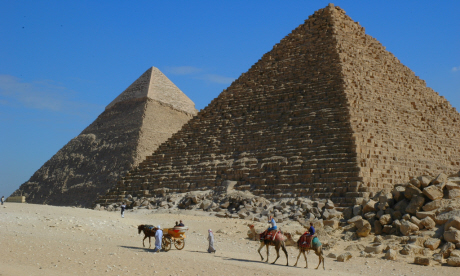 Five more autumnal city breaks
Five more autumnal city breaks1. Cairo, Egypt
This sight-packed city cools a little by October (though highs are still 30°C), making for more pleasant exploring. Flight time from UK: 4.5hrs.
2. Fès, Morocco
Get utterly lost in the labyrinthine medina of this medieval town, still a balmy 20-25°C. Flight time from UK: 3-3.5hrs.
3. Palma, Mallorca
Ignore nearby resorts – this is a classy island capital, with October highs of 22°C. Flight time from UK: 2.5hrs.
4. Dubrovnik, Croatia
This beautiful walled town is packed in peak season; visit now instead for quieter streets and highs of 19°C. Flight time from UK: 2.5-3hrs.
5. Dakar, Senegal
Dakar cools and drys off come October, better for hitting the clubs of West Africa’s liveliest capital. Flight time UK: 8-9hrs (with change in Brussels).
Had enough of the summer sun? Check out these 8 autumnal adventures... More
Or if you're ready for winter, take a look at these 6 ultimate Arctic adventures... More
Need some inspiration? Where to go in October | Plan a trip... More
30 short-hop summer adventures | Inspire me... More
Closer to home: 25 things to do in wild Scotland | Inspire me... More